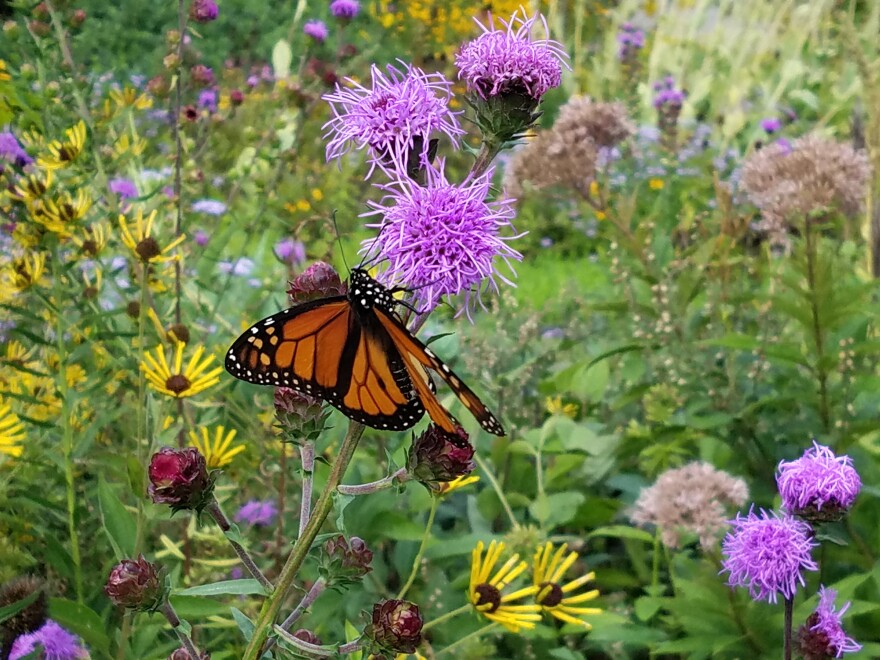The International Union for Conservation of Nature (IUCN) last week added the migratory monarch butterfly to the endangered species list. Threats to the butterfly's natural habitats and food sources over the years have placed the brightly colored insect in jeopardy.
"Locally, our monarch butterfly species have no protections. There are no state or federal protections," says Jenilee Braun, naturalist and program coordinator at Hayes Arboretum in Richmond, Ind. "Recently, the IUCN listed them on their own Red List, which is a global listing, but that does not provide any protections locally, unfortunately."
Like across the rest of North America, pesticide and herbicide usage as well has habitat loss are leading to the butterfly's decline. The butterflies depend on a good variety of native flowers to provide nourishment for their long treks between Canada and Mexico.
Tip one: plant lots of native flowers like coneflowers, bee balm, and goldenrod. Zinnias and lantana are good, too.
The milkweed plant is also vital. Monarchs almost exclusively lay their eggs on the fibrous flower, and it's the only food source for monarch caterpillars.
"The caterpillar will consume the leaves of the milkweed, and in doing so, it becomes protected because it's actually eating some of those toxins that are in milkweed," Braun explains. "If a predator were to try to bite a monarch, it's going to taste bitter and it's going to try to spit it back out. It serves a dual purpose as a homeplace for the monarchs, but it also provides protection through those toxins that they consume."
Herbicide use has decimated the milkweed plant. That's why planting it is always a top recommendation for how to help the monarchs.
Don't let the name deter you, either. Though it may have "weed" in it, milkweed is quite pretty and not a "weed" at all.
Become a citizen scientist
Braun says you can help out by educating yourself about monarchs and their habitats, and giving of your time.
"You can also help protect grasslands. If you have the resources, you can volunteer your time with local nature groups. There's many groups that are trying to maintain pollinator areas like we do here (at Hayes Arboretum) or even monarch waystations."
People can also contribute to counting monarch populations using apps like iNaturalist, tagging monarchs at scheduled releases, and more.
The annual International Monarch Monitoring Blitz also is coming up. It runs July 29 - Aug. 7. During that time people are encouraged to track monarch butterfly observations — that can include spotting a monarch egg, caterpillar, and/or adult on milkweed — and reporting the observations with a community science program.
The data collected across the USA, Canada and Mexico helps researchers better understand the monarch butterfly’s breeding productivity, range, and timing in North America.
In the Midwest, you can report your findings to Journey North or the Monarch Larva Monitoring Project.
Why do we need the monarch butterfly?
Monarchs are more than just pretty wings. They're pollinators, and humans rely on them for flowers, fruits and many of the foods we eat, Braun points out.
"They also serve as an interest point due to their beauty. They get others wanting to learn more about the natural world, about insects, it spurs some people to want to garden.
"And the monarch itself is very symbolic. I think that a lot of people relate to the metamorphosis lifestyle and that migration and see it almost as an inspiration or a motivation, whether it's in the everyday or in works of art."



